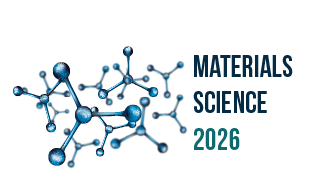3rd Global Event on
Materials Science and Engineering
October 29-30, 2026 | Berlin, Germany

Materials Science 2026

Volcani Institute, Israel
Abstract:
Pickering emulsions are stabilized by nanoparticles (NPs) that self-assemble at the oil-water interface, acting as physical barriers. These emulsions can form as either oil-in-water (o/w) or inverse emulsions. Both inorganic NPs, such as silica and titania, and NPs from natural sources, such as virus-like particles (VLPs), can serve as Pickering stabilizers. At the interface, the wettability of the particles determines their placement within the water and oil phases.This study introduces a novel, highly tunable platform based on incorporated polymers in Pickering emulsions. The polymer component is either dissolved in the dispersed or continuous phase or covalently conjugated to the Pickering stabilizer. Silica and titania nanoparticles were used as stabilizers and functionalized with different polysiloxane oligomers to adjust their surface properties. Natural stabilizers, including VLPs, were also utilized. Various polymers, such as polydimethylsiloxane (PDMS) and polyacrylate, were dissolved in the dispersed or continuous phase of the emulsions.Eco-friendly Pickering emulsions were formulated based on paraffin-in-water emulsions stabilized by silica or titania nanoparticles functionalized with (3-Aminopropyl)triethoxysilane. The controllable droplet size, along with the high colloidal stability of the Pickering emulsions, enabled the individual compartmentalization of fungal biopesticides (Metarhizium brunneum) through simple mechanical mixing. These Pickering emulsions, with individually compartmentalized biopesticides, exhibited significantly higher pest control activity against Spodoptera littoralis larvae compared to controls. The titania-based emulsions effectively protected the individually compartmentalized cells from UV radiation. Stabilizing the same paraffin-in-water emulsions with plant-based VLPs resulted in a fully biocompatible emulsion. Subsequently, a new two-mode approach for epitope presentation of SARS-CoV-2 was developed using these fully biocompatible emulsions. Covalent attachment of SARS-CoV-2 S1-peptide epitopes to the VLP surface and subsequent assembly of VLP/epitope conjugates at the oil/water interface of the paraffin-in-water emulsions significantly enhanced the intensity of SARS-CoV-2 epitope presentation. Our in-vivo assay in mice showed that the αSARS-CoV-2-S1 IgG titers in mouse antisera, taken from mice exposed to the studied emulsions, were an order of magnitude higher compared to epitopes administered with an adjuvant. These results confirmed the efficacy of the new formulation. This novel VLP-based Pickering emulsion platform is a fully synthetic approach that can be readily applied to vaccine development for a wide range of pathogenic epitopes.
Biography:
Guy Mechrez is a leading researcher in polymer science, nanomaterials, soft matter, and colloidal science. He earned his Ph.D. from the Technion, focusing on CNT/polymer nanocomposites. After completing his Ph.D. in 2014, he managed the Coating and Materials R&D team at Shamir Optical Industry. Since 2015, he has been at the Volcani Institute, Agricultural Research Organization (ARO) in Israel, leading research on particle-stabilized emulsions and polymer nanocomposites. His work addresses challenges in food and agriculture, including ethylene sensing, biopesticide encapsulation, and self-cleaning greenhouse surfaces.
